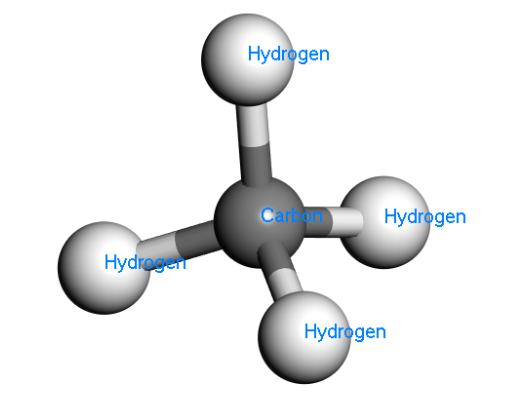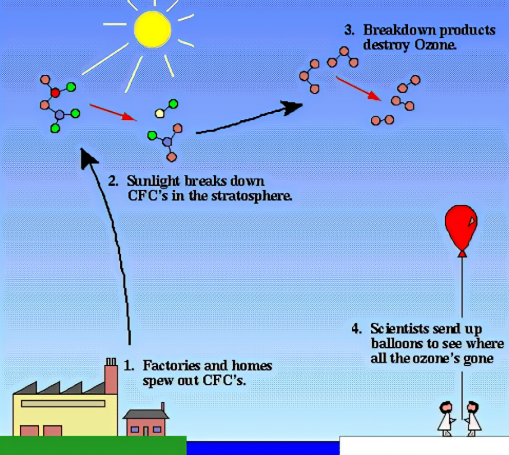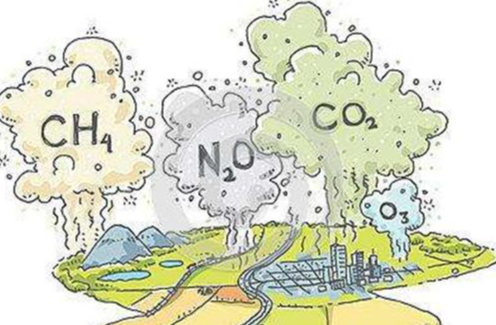Greenhouse gases are the main drivers of global warming. They trap heat in the atmosphere, causing the Earth’s temperature to rise. Not all greenhouse gases are created equal, however. Some are far more effective at trapping heat than others. Understanding which gases have the greatest impact on climate change is crucial. As a leader in greenhouse technology, Chengfei Greenhouses is committed to providing sustainable solutions for the agriculture industry, while helping reduce greenhouse gas emissions.
Carbon Dioxide: The Most Common, But Less Potent
Carbon dioxide (CO₂) is the most common greenhouse gas, primarily emitted from the burning of fossil fuels like coal, oil, and natural gas. While it has a large concentration in the atmosphere, its greenhouse effect is relatively weak compared to other gases. With a global warming potential (GWP) of 1, CO₂ traps heat, but not as effectively as others. However, its emissions are vast, accounting for roughly two-thirds of global greenhouse gas emissions. Due to its large emissions, CO₂ is a significant factor in global warming, even if its heat-trapping power is lower.


Methane: A Powerful Heat-Trapper
Methane (CH₄) is much more effective at trapping heat than carbon dioxide, with a GWP 25 times greater. Although methane has a lower concentration in the atmosphere, it is far more potent in the short term. Methane is primarily released through agriculture, landfills, and natural gas extraction. Livestock, especially ruminant animals, produce large amounts of methane. Organic waste in landfills also decomposes and releases methane into the atmosphere. While methane emissions are not as massive as CO₂, its short-term impact on climate change is substantial and urgent.
Chlorofluorocarbons (CFCs): Supercharged Greenhouse Gases
Chlorofluorocarbons (CFCs) are some of the most potent greenhouse gases. Their GWP is thousands of times greater than that of CO₂. Although they are present in the atmosphere in small quantities, their effect is disproportionately strong. CFCs were widely used in refrigeration and air conditioning systems, but they also contribute to ozone layer depletion. Despite international agreements to phase out their use, CFCs continue to be released through old appliances and improper recycling practices.

Nitrous Oxide: A Growing Problem in Agriculture
Nitrous oxide (N₂O) is another potent greenhouse gas, with a GWP 300 times greater than CO₂. It primarily comes from agricultural activities, especially when excessive nitrogen-based fertilizers are used. Soil microbes convert nitrogen into nitrous oxide. Biomass burning and some industrial processes also emit this gas. As agriculture expands, particularly with intensive fertilizer use, nitrous oxide emissions are becoming a significant global concern for greenhouse gas reduction.

Which Gas Has the Strongest Impact?
Among all greenhouse gases, CFCs have the highest warming potential, thousands of times greater than CO₂. Methane follows closely behind, with a warming effect 25 times stronger than CO₂. Nitrous oxide, though less emitted than methane and CFCs, still has a substantial warming potential, 300 times that of CO₂. While CO₂ is the most abundant greenhouse gas, its warming potential is weaker compared to the others.
Each greenhouse gas contributes differently to global warming, making it essential to address all sources. Chengfei Greenhouses works to reduce the emission of these gases by promoting energy-efficient, sustainable farming practices, and adopting environmentally friendly technologies. As countries around the world move toward green energy, improve agricultural efficiency, and better waste management practices, global efforts are underway to cut down on greenhouse gas emissions. Reducing these emissions is crucial for slowing down the global warming process.
Welcome to have a further discussion with us.
Email:info@cfgreenhouse.com
Phone:(0086)13980608118
Post time: Apr-06-2025







 Click to Chat
Click to Chat